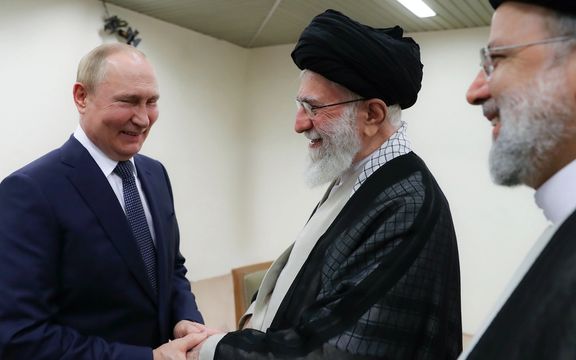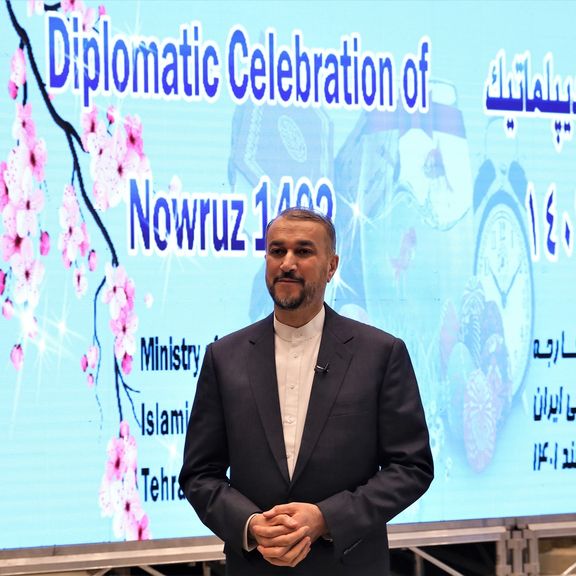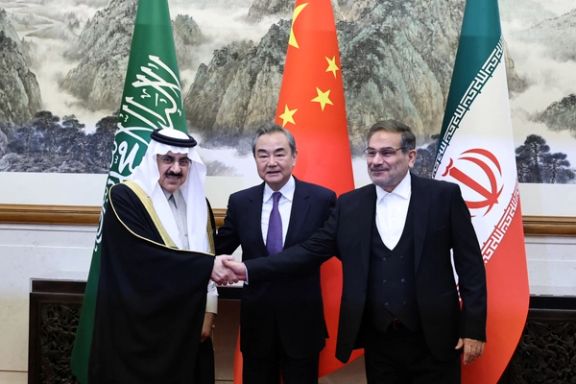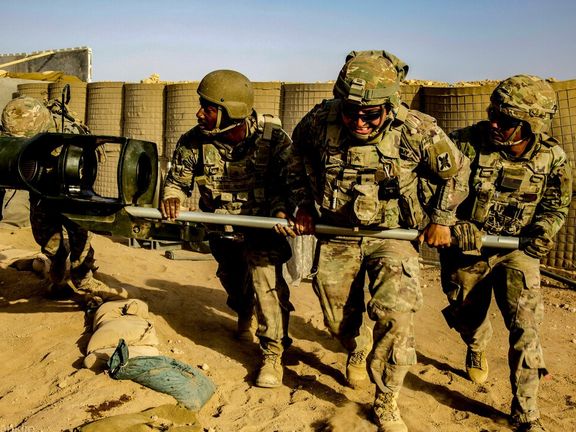Egypt To Allow Iranians Visas On Arrival In Sinai As Tensions Ease

Egypt will soon allow Iranians travelling with tour groups to obtain visas on arrival in the south of its Sinai Peninsula Egyptian tourism ministry officials said.

Egypt will soon allow Iranians travelling with tour groups to obtain visas on arrival in the south of its Sinai Peninsula Egyptian tourism ministry officials said.
The decision is part of a series of measures announced on Monday aimed at improving access to visas to boost tourism revenues at a time when Egypt has been struggling economically with an acute foreign currency shortage.
It also comes as some Middle Eastern countries including Egypt are taking steps to ease regional tensions. Egypt's Sunni Arab ally Saudi Arabia and Shi'ite Iran announced this month that they would restore diplomatic relations.
Cairo has mended a rift with Qatar and is re-establishing ties with Turkey, another country to benefit from new visa rules with Turkish nationals given expanded access to visas on arrival, according to a Egyptian Tourism Ministry statement.
Among the other new visa rules announced were a $700, five-year multiple-entry visa, which Tourism Minister Ahmed Issa told Reuters was aimed at investors and property owners who are based outside Egypt.
On visas for Iranians arriving in South Sinai, home to the highly secured resort of Sharm el-Sheikh, Issa said, "We will evaluate the experience of their arrival in South Sinai as a first step, and building on that, we'll determine if they will be admitted in other places."
Relations between Egypt and Iran have generally been fraught in recent decades although the two countries have maintained diplomatic contacts.
Tourists from China, which Egypt regards as a market with big potential, and Indians resident in Gulf countries will also be granted visas on arrival.
All new visa rules have been approved in principle and will be put into effect soon, a tourism ministry official said.
Reuters report

As the US weighs Iran's destabilizing actions across the Middle East, the United States now has to deal with Tehran’s expanding cyber cooperation with Russia.
Challenges posed by Iran continue to grow, forcing the Biden administration to take more of a hands-on approach to the regime than it possibly wanted.
While Iran supplies drones and reportedly other weapons to Russia, its proxy forces attacked US bases in Syria last week, with the US launching a rare retaliatory strike, but emphasizing its goal of avoiding a wider conflict with Tehran.
The WSJ reported Monday that Moscow’s burgeoning military cooperation with Tehran includes a plan to help its sanctioned ally’s cyberwarfare capabilities, according to the Journal’s sources.
The US State Department has avoided a direct response to the report. Deputy spokesperson of the US State Department Vedant Patel was asked during his press briefing Monday to react though strangely, said he had not seen it, although the article was published hours before the briefing took place.
Patel did, however, publicly comment that there is no doubt about the concern felt in the White House. “What I will say is that of course Russia’s deepening of relationships with malign actors like Iran continues to be a deep concern,” he said.
He added, “We have seen the havoc caused by Iranian-made drones that Russia has unleashed on Kyiv, targeting energy and civilian infrastructure, so of course this relationship is one that we are paying close attention to.”
Iran, which never condemned Russia’s invasion of Ukraine, began supplying kamikaze drones to its ally in mid-2022. US National Security Advisor Jake Sullivan warned in mid-July that Russia was seeking to obtain Unmanned Aerial Vehicles (UAVs) from the Islamic Republic.
The first Iranian drones were used by Russia in noticeable numbers in October and first evidence of a UAV downed by Ukraine emerged on October 6.

The WSJ quoted sources as saying that Russia has been providing Iran with communication, surveillance and eavesdropping capabilities, photography devices and lie detectors from the start of the war in Ukraine.
This is when talks in Vienna to revive the 2015 nuclear accord with Iran broke up, despite intense Western efforts to reach a compromise with Iran. In August, the European Union offered one final plan that according to Washington Tehran did not accept, by putting forth new unacceptable demands.
It is not clear to what extent Russia’s technical assistance is geared toward boosting military capabilities or Iran’s policing resources against dissidents. Surveillance technology in many cases can have dual use too. Tehran already has an extensive system of digital surveillance over its population much like China and it widely censors the internet.
As local media is under heavy government control, Iranians rely on messaging apps to receive news and exchange information. This becomes even more crucial during protests, when news about rallies and gatherings becomes a mobilization tool for protesters.
The government banned Instagram, the one accessible major platform last year to prevent communication between the people and news reaching the outside world about the protests.
Seeing this as insufficient, authorities also resorted to denying access to the Internet in wide swaths of the country for months, hurting millions of people who relied on digital commerce to make a living.
China has also been assisting Iran’s digital surveillance programs. In December, the United States blacklisted China’s Tiandy Technologies for supplying video surveillance equipment to the Revolutionary Guard (IRGC).
Western countries, Israel and Saudi Arabia have in the past reported frequent Iranian cyber-attacks on government and private institutions. Social media giants Facebook and Twitter have closed thousands of fake Iranian accounts for spreading disinformation.
What this means for Iranians and for wider geo-politics is yet to be seen, but what is clear, is that the desire for Biden to quietly leave the Middle East behind, is ever-more unlikely.

Iran’s Foreign Minister Hossein Amir Abdollahian says the Islamic Republic is going to invite King of Saudi Arabia to visit Tehran even though the ageing monarch’s last foreign visit was four years ago.
In a bid to show the success of the recent detente with its regional rival, Abdollahian has been overblowing the ideas of a royal visit.
The ageing Saudi king’s last foreign trip was in 2019, since then, his son and de facto ruler, Mohammed Bin Salman, taking over all overseas duties. In spite of denials from the kingdom, it is widely believed the King has dementia and his role in public life continues to lessen.
The country’s foreign ministers, Saudi’s Prince Faisal bin Farhan and his Iranian counterpart, Hossein Amir Abdollahian, have spoken twice over the last week to discuss details of the new relations, after a deal brokered by Beijing broke a diplomatic deadlock dating back to 2016.
Pro-regime mobs attacked the Saudi embassy in Tehran following the execution of a Shiite cleric in Saudi Arabia, causing years of hostility.
However, as Iran’s proxy militia in Yemen, the Houthis, continues to attack Saudi-led coalition in spite of a weak ceasefire, it will not be plain sailing as the two rivals thrash out the fine print.
Iran will no doubt be reluctant to abide by the conditions of exerting greater control over its proxy militia which has been the thorn in Saudi’s side since the war in Yemen broke out eight years ago.

China’s President and Saudi Arabia’s Crown Prince have spoken by phone, discussing a wide range of topics including supporting follow-up talks between Riyadh and Tehran.
President Xi Jinping said in his discussion with Crown Prince and Prime Minister Mohammed bin Salman Al Saud that he hopes the two sides will continuously improve their relations on the basis of the results of the dialogue, state media CCTV said on Tuesday.
Earlier this month, Xi helped broker a surprise deal between Iran and Saudi Arabia, Middle East rivals, to restore diplomatic ties after seven years of rivalry and tensions.
Iranian and Saudi foreign ministers held a phone conversation Sunday and agreed to meet to work out the details of re-opening diplomatic missions.
The deal was seen as a major potential change in the Persian Gulf region and the Middle East not only for reducing Saudi-Iranian tensions but placing China as a regional diplomatic force. Many analysts saw the development as a loss for the United States, which for decades has been Riyadh’s close ally.
Continuing to promote and develop China-Saudi Arabia relations, Xi said the two countries will firmly support each other on issues involving their respective core interests.
China has become one of the major Saudi crude oil customers and investors and also enjoys considerable influence over Iran’s Islamic government.
China and Saudi Arabia will make more contributions to promote peace, stability and development in the Middle East, Xi said, according to state media.

Twitter’s recent suspension of hundreds of accounts has angered Iran's pro-monarchy Twitterati who believe they are being targeted by the Islamic Republic.
“Thousands of pro-democracy activists' Twitter accounts have been suspended en masse, indicating #cyberterrorism by an adversarial state and its proxies. We are investigating it. Would you care to join us in this effort, @elonmusk?” activist Shima Kalbasi tweeted Monday.
Kalbasi said it appears that the Twitter rules are being manipulated to benefit the Iranian regime and other actors. “I am reporting this issue to the FBI for further investigation,” she said in another tweet.
Sometimes Twitter asks the author to remove a tweet and serve a period of time in read-only mode before they can tweet again. In more serious cases, Twitter suspends the accounts of those “whose sole purpose is to violate” the platform’s policies. Such decisions can be appealed. Twitter also suspends accounts when other users mark its tweets as abusive.
@Sashtyani, one of the popular pro-monarchy accounts with over 62k followers, however, dismissed such “conspiracy theories” and said Twitter’s algorithms are responsible for the mass suspension of these like-minded accounts. It is possible that the suspended accounts followed too many of the fake accounts created by the Islamic Republic’s cyber-army, @Sashtyani argued.
This post claims Twitter has shown dual standards when it comes to the use of the same hashtag with the phrase “Death to” by two different users.
The Iranian regime has what it calls a “cyber army” with thousands of bots and agents who try to spread disinformation or report the accounts of dissidents. Both Twitter and Facebook have closed thousands of such accounts in the past once they concluded that they were government-driven actors.
Apparently, many of the tweets found abusive by Twitter contained the Persian word marg (death) in phrases such as “Death to …” against the Islamic Republic or various political groups.
“Twitter is now suspending accounts that say ‘Down with the 1979 riot’. Not sure why Elon Musk's Twitter is suspending the accounts that wish the fall (death) of that ‘riot’ and the radical Islamist regime it created. What is wrong with that wish?”, Saeed Ghasseminejad, a senior advisor at the Washington-based Foundation for Defense of Democracies (FDD) tweeted Sunday. He included an image of a message from Twitter to an account required to remove a tweet that read “Death to the 1979 riot”.
Another tweet addressed to Musk with the hashtag #FreedomOfSpeech asked if he has any thoughts on suspension of accounts that “express a desire for the downfall of the radical Islamist regime and the '79 riot in Iran?”
Some Twitterati say tweets appearing to be abusive or threatening are probably being removed by artificial intelligence rather than persons who examine the content.
Tweeter sends a message to account holders when one or more of their tweets are marked as containing violent speech or threats.
Twitter prohibits “unwanted sexual conduct and graphic objectification that sexually objectifies an individual without their consent” as well as the “use of insults or profanity to target others”, “behavior that encourages others to harass or target specific individuals or groups with abusive behavior.”
Twitter also says tweets by an account that have been found in violation of Twitter safety policies will be downranked in replies, made ineligible for amplification in top search results and/or on timelines for users who don’t follow the Tweet author.

The United States will not back away from its deployment to Syria, despite attacks on its forces there last week by Iran-backed militia, the White House said Monday.
A one-way attack drone struck a US base in Syria on March 23, killing an American contractor, injuring another and wounding five US troops.
That triggered US retaliatory air strikes and exchanges of fire that a Syrian war monitoring group said killed 19 Syrian and pro-Iranian forces.
White House National Security Council spokesperson John Kirby said he was not aware of any additional attacks over the past 36 hours but cautioned, "We're going to stay vigilant."
Kirby also referred to President Joe Biden's remarks on Friday, when he warned Iran that the United States would act forcefully to protect Americans.
"There's been no change in the US footprint in Syria as a result of what happened the last few days," Kirby said.
"We're not going to be deterred … by these attacks from these militant groups."
Syria's foreign ministry on Sunday condemned US strikes, saying Washington had lied about what was targeted and pledging to "end the American occupation" of its territory.
Iran's foreign ministry also condemned the strikes, accusing US forces of targeting "civilian sites."
US forces first deployed into Syria during the Obama administration's campaign against Islamic State, partnering with a Kurdish-led group called the Syrian Democratic Forces. There are about 900 US troops in Syria.
Prior to the latest spate of attacks, US troops had been attacked by Iranian-backed groups about 78 times since the beginning of 2021, according to the US military.
Reporting by Reuters